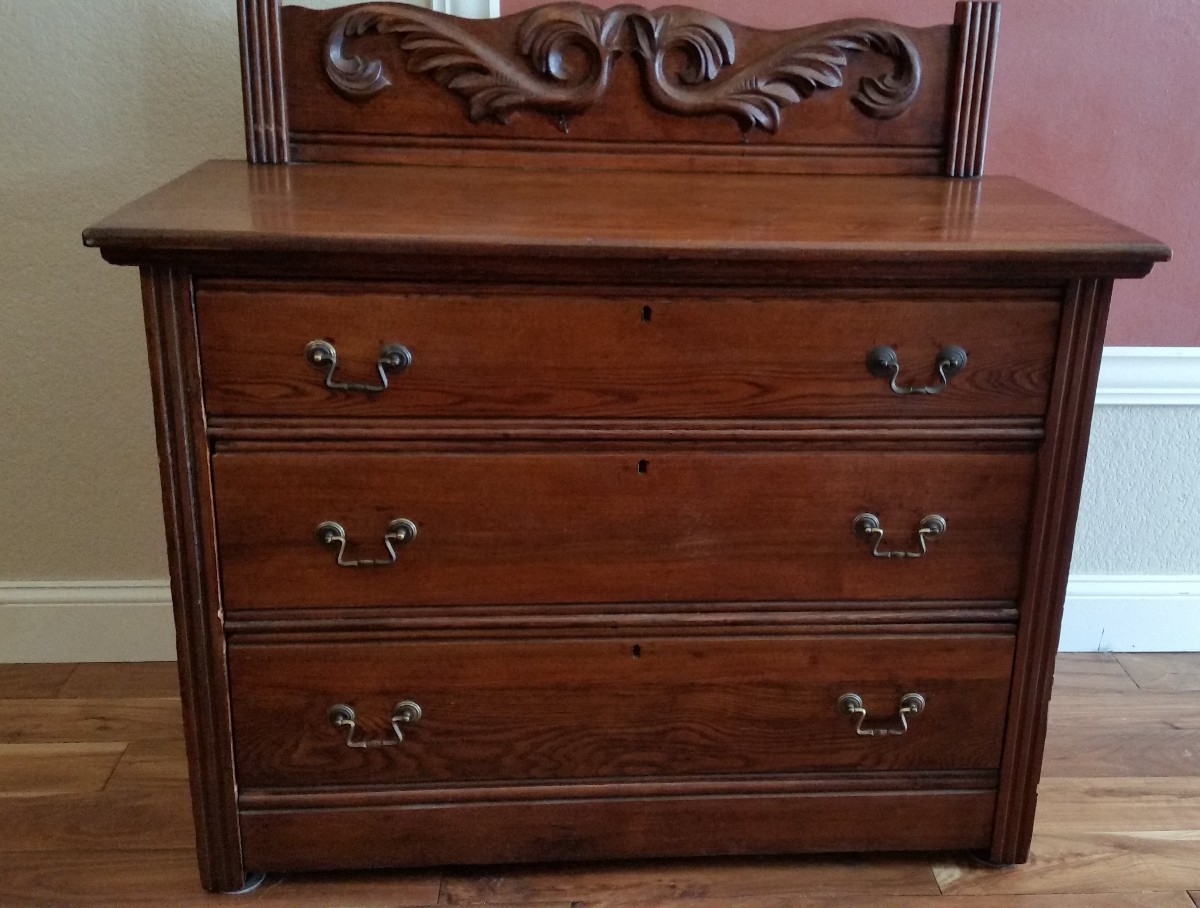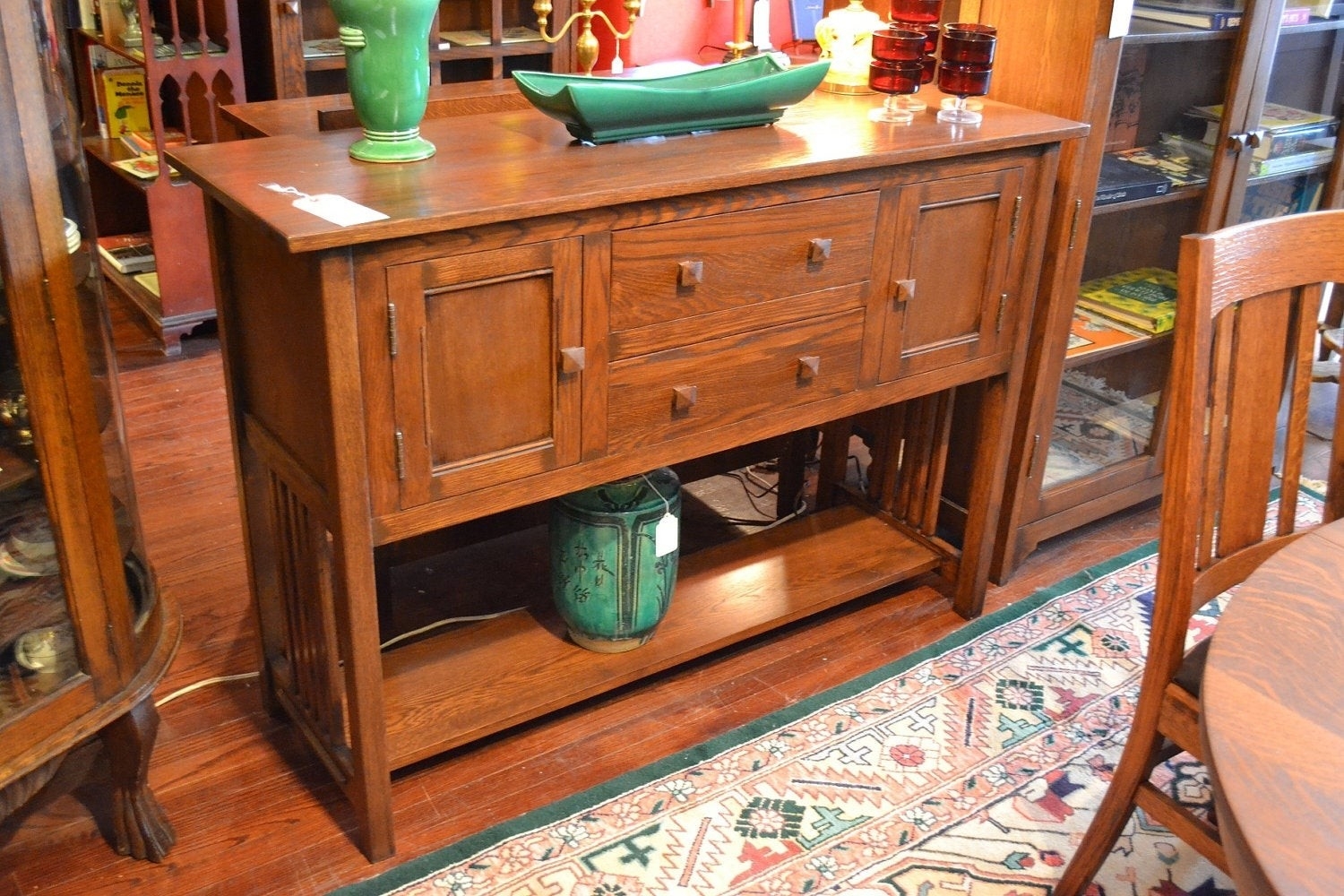Mission Style Sideboard Cabinet

The Mission style, a prominent design movement in the early 20th century, emerged as a response to the ornate and overly decorative Victorian styles prevalent at the time. This style, characterized by its simplicity and functionality, resonated with the values of the Arts and Crafts movement, which championed handcrafted objects and a return to natural materials.
Origins and Connection to the Arts and Crafts Movement
The Mission style’s origins can be traced back to the Arts and Crafts movement, a philosophical and artistic movement that gained traction in the late 19th century, particularly in England. This movement emphasized the beauty of handcrafted objects, the use of natural materials, and the rejection of mass production.
The Mission style, named for its association with the California missions, found its roots in the work of Charles and Henry Greene, prominent architects and designers who embraced the Arts and Crafts principles. They designed furniture and interiors that reflected the simplicity and functionality of the California missions, with their use of sturdy materials, clean lines, and handcrafted details.
Key Design Elements of Mission Style Furniture
Mission style furniture is distinguished by its signature design elements, which embody the principles of simplicity, functionality, and natural beauty.
- Natural Materials: Mission style furniture primarily utilizes natural materials such as oak, walnut, and redwood, often left in their natural state with minimal embellishment. This choice reflects the Arts and Crafts movement’s emphasis on authenticity and the inherent beauty of natural materials.
- Simple Lines: The design aesthetic of Mission style furniture emphasizes clean, uncluttered lines, often featuring geometric shapes and straight edges. This approach to design prioritizes functionality over ornamentation, creating a sense of order and harmony.
- Functional Design: Mission style furniture is designed to be both beautiful and practical. Its sturdy construction and functional elements, such as built-in drawers and shelves, reflect a focus on utility and durability.
- Handcrafted Details: Mission style furniture is often characterized by handcrafted details such as hand-cut dovetail joints, pegged construction, and exposed hardware. These details add a touch of craftsmanship and authenticity to the pieces.
Prominent Designers and Furniture Makers
The Mission style was popularized by several influential designers and furniture makers who embraced its aesthetic principles and contributed to its evolution.
- Charles and Henry Greene: These brothers, considered pioneers of the Mission style, designed numerous homes and furniture pieces that embodied the style’s signature simplicity and functionality. Their work, particularly their use of natural materials and handcrafted details, had a significant impact on the development of the Mission style.
- Gustav Stickley: A prominent furniture maker and advocate of the Arts and Crafts movement, Stickley established the Craftsman Workshops in 1904. His furniture, known for its sturdy construction and simple design, became synonymous with the Mission style and helped to popularize it throughout the United States.
- L. & J.G. Stickley: This furniture company, founded by Leopold Stickley, brother of Gustav, produced furniture that reflected the Mission style’s aesthetic. Their furniture, known for its high quality and attention to detail, contributed to the widespread popularity of the Mission style.
Design and Construction of Mission Style Sideboard Cabinets

Mission style sideboards are renowned for their simple, functional, and elegant design. They are crafted with an emphasis on natural materials, sturdy construction, and timeless aesthetics. This style embodies the principles of the Arts and Crafts movement, which championed handcrafted artistry and quality over mass production.
Materials Used in Mission Style Sideboards, Mission style sideboard cabinet
The choice of materials in Mission style sideboards reflects the movement’s focus on natural beauty and durability. The most common wood used is oak, known for its strength, grain pattern, and ability to age gracefully. Maple is another popular choice, prized for its lighter color, smooth grain, and resistance to scratches. Other woods like cherry, walnut, and pine are sometimes used, adding variations in color and texture.
Construction Techniques
Mission style sideboards are constructed using traditional woodworking techniques that emphasize strength and durability.
- Mortise and Tenon Joints: These joints are strong and secure, created by cutting a precisely shaped hole (mortise) in one piece of wood and a corresponding projection (tenon) on the other. The tenon fits snugly into the mortise, creating a strong and lasting connection.
- Dovetail Joints: This classic joint is known for its strength and decorative appeal. Dovetails are created by interlocking tapered pins (tails) and slots (pins) that interlock, creating a joint that resists separation.
- Hand-Crafted Details: Mission style sideboards often feature hand-crafted details that enhance their beauty and craftsmanship. These can include hand-planed surfaces, carved accents, and hand-rubbed finishes.
Design Features
Mission style sideboards are characterized by their clean lines, simple forms, and functional design.
- Open Shelves: Open shelves provide a convenient and visually appealing way to display decorative items, books, or serving pieces.
- Drawers: Drawers offer storage for linens, tableware, or other items, adding functionality to the sideboard. They are typically constructed with dovetail joints and feature simple, functional hardware.
- Decorative Hardware: Mission style hardware is typically simple and functional, often made of metal with a matte or oiled finish. Examples include drop-ring pulls, strap hinges, and simple latches.
Mission Style Sideboard Cabinets in Modern Interiors

Mission style sideboards, with their clean lines, handcrafted details, and enduring appeal, seamlessly blend into contemporary homes, adding a touch of warmth and character. Their versatility allows them to be incorporated into various rooms, from living rooms to dining rooms, and even entryways, enhancing the overall aesthetic while serving a functional purpose.
Styling Mission Style Sideboards
Mission style sideboards are incredibly adaptable, offering various styling options to complement different interior designs.
- Living Room: In a living room, a Mission style sideboard can serve as a stylish media console, housing a television, gaming consoles, and other electronics. It can also be used to display books, artwork, or decorative objects, creating a focal point in the room.
- Dining Room: In a dining room, a Mission style sideboard can be placed behind the dining table, serving as a buffet for serving food and drinks. It can also be used to store serving dishes, linens, and other dining essentials.
- Entryway: In an entryway, a Mission style sideboard can serve as a functional piece for storing keys, mail, and other items. It can also be used to display decorative objects, such as a vase of flowers or a sculpture, adding a touch of elegance to the space.
Comparing Mission Style Sideboards with Other Styles
Here’s a table comparing Mission style sideboards with other popular furniture styles, highlighting their key differences:
| Style | Key Characteristics | Typical Materials | Overall Aesthetic |
|---|---|---|---|
| Mission | Simple, clean lines, handcrafted details, emphasis on functionality | Solid wood, such as oak or cherry | Rustic, minimalist, warm, timeless |
| Mid-Century Modern | Geometric shapes, sleek lines, use of natural materials | Wood, leather, metal | Modern, minimalist, functional, sophisticated |
| Farmhouse | Distressed wood, rustic finishes, focus on comfort and practicality | Reclaimed wood, metal | Rustic, cozy, welcoming, casual |
A mission style sideboard cabinet, with its clean lines and sturdy construction, can be a timeless addition to any dining room. While its closed doors offer ample storage, consider adding a touch of visual interest by incorporating the same style in your upper kitchen cabinets, opting for upper kitchen cabinets with glass doors to showcase your favorite china or glassware.
This creates a cohesive aesthetic throughout your home, blending traditional elegance with a modern touch.
Mission style sideboard cabinets, with their sturdy construction and simple lines, offer a timeless elegance to any dining room. For those seeking a dedicated space for their wine collection, the howard miller verona wine cabinet presents a sophisticated alternative.
This cabinet, with its sleek design and ample storage, blends seamlessly with the classic charm of a mission style sideboard, creating a harmonious and functional centerpiece for any home.
